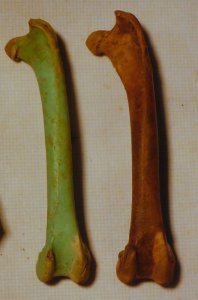A news item this morning made the remarkable claim that there are more deer in Britain now “than at any time since the Ice Age”. I call this remarkable, not because I think it may not be true, but because I am a little surprised that anyone feels they can defensibly say such a thing. In fact, the story was about some recent research on roe deer and muntjac numbers in East Anglia. There certainly are more muntjac in Britain than ever before because they are a relatively recent introduction. But roe deer? This species is common enough today, and techniques for estimation of numbers are quite robust. So how many roe deer were there in Britain around 5000 years ago?
We have, of course, little idea, beyond saying that their bones turn up regularly but in small numbers throughout British prehistory. Beyond that, we have little hope of putting population numbers on the species in the past. Studies of roe deer genetics based on ancient DNA from their bones might give us some ball-park estimates, though those figures would be based on assumptions about their distribution and breeding behaviour. Otherwise, we know they were present, we suspect they were quite common and widespread, but beyond that it would be a brave zooarchaeologist who staked their reputation on comparing absolute population numbers now and back then.
Even if deer are so abundant, is that a problem? Maybe so, as they have quite an impact on the vegetation around them, and that in turn may affect other species. Removal of scrub by grazing off seedlings may affect small birds and invertebrates, and competition for grazing may affect hares. There are calls for a cull, of course, as any animal that gets out of hand in our largely artificial countryside has to be culled. Why not delegate the cull to another species? We need a predator that would take out small deer species in a landscape of mixed woodland and clearings, without presenting a danger to the human population. Yes, I am going to recommend re-introduction of lynx. They fit the purpose excellently, and were a native species until Anglo-Saxon times. Ramblers need not fear being stalked and slaughtered by lynx, but the possibility of a sighting on some misty morning would certainly add a frisson to walks in Thetford Chase or Kielder Forest. Zooarchaeology does a good job in reminding us what has been altered, gained and lost over the millennia. England has gained muntjac and lost lynx. The solution is obvious.








